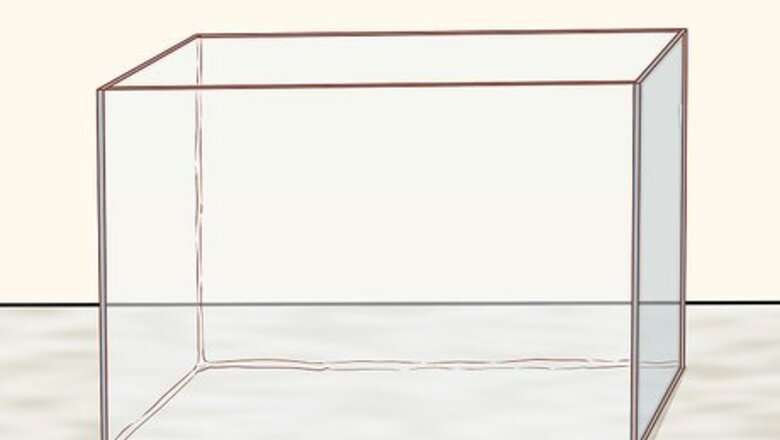
views
Housing the Toad
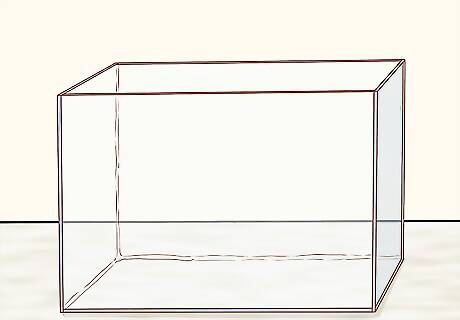
Keep your toad in a 15 US gal (57 L) aquarium tank. A toad needs a good amount of space to hop around when it's kept as a pet. Purchase a 15 US gal (57 L) tank from a pet store or online to keep your toad in. The tank should be at least 24 inches (61 cm) long, 12 inches (30 cm) tall and 12 inches (30 cm) wide to keep your toad happy. Make sure you choose a tank with a mesh or screen lid that fastens tightly to prevent your toad from escaping. The lid will stop your toad from jumping out of the tank, and it should be mesh or screen to provide proper ventilation Toads are comfortable at room temperature and in ambient daylight, so you don't need to purchase any heaters or lamps for your toad. Keep the tank out of direct sunlight, because too much sun can hurt your toad. If you want to catch more than 1 toad to keep as a pet, you'll need a bigger tank. For every extra toad you want to keep in the tank, you'll need a tank that is 5 US gal (19 L) bigger. However, keeping more than 4 or 5 toads may require a very large tank or result in some of your toads breeding unexpectedly.
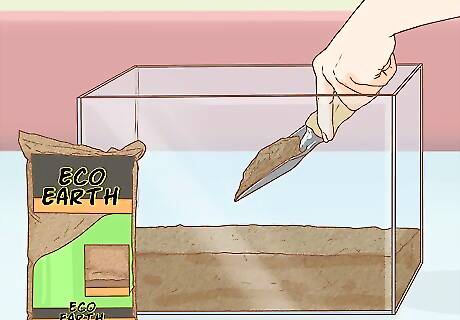
Add a substrate material such as eco earth or moss to the tank. A substrate is any dirt-like material you can place at the bottom of your toad's tank that will absorb its waste and give it something to burrow into. Purchase some eco earth, moss, or shredded leaves and pour 3 to 4 inches (7.6 to 10.2 cm) into the base of your tank. You can also buy specialty substrate material at a pet store, which will make sure your toad is extra comfortable. Don't use anything too hard, like gravel or sand, as substrate. It could be harmful to your toad if it swallows it. To make it easier for your toad to dig into the substrate, moisten it with a spray bottle of non-chlorinated water every few days.
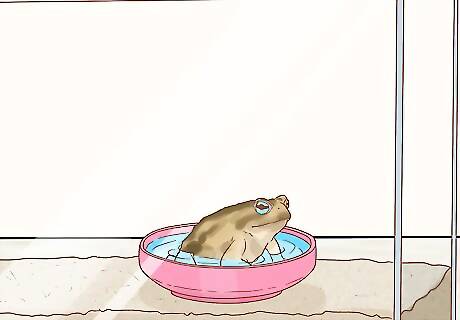
Give your toad a dish of non-chlorinated water to sit in. While toads don't drink as much water as a lot of other common pets, they do need to spend a lot of the day soaking in water to stay hydrated. Keep a large dish or pool of non-chlorinated water in the tank that your toad can sit in. Make sure it's not taller than the height of your toad, or else it may drown. Use dechlorination tablets to remove the chlorine from tap water, or fill the dish with bottled water. Don't use distilled water, as it will be missing a lot of nutrients that the toads need to survive. Even the small amounts of chlorine found in most tap water will be harmful to your toad, so it's important to use water that is filtered, bottled, or has been treated for chlorine. If you notice the water becoming cloudy, you should change it. This might be as often as once a day to keep your toad happy. The water should be shallow enough for your toad to sit in, but not so shallow that it cannot soak properly. Try and keep the depth of your water around half of the height of your toad.
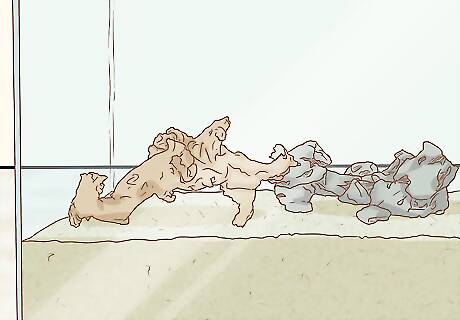
Add some hiding places to your tank. Toads love having places to hide and things to burrow under, so adding some decorations to the toad's tank will make it much happier. Add in a piece of wood, some large rocks, and some plants to make the toad's new home feel as natural as possible. Make sure that you don't put anything in the tank that could fall over and hurt the toad. Try and use low and wide objects rather than anything too tall. Gather some plants, rocks, or branches from the area where you caught your toad to make it feel at home. Anything natural gathered from your yard should be safe, whereas introducing foreign or strange items may distress your toad.
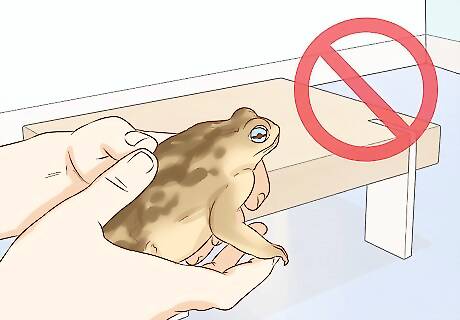
Avoid handling the toad as much as possible. While your toad should be happy to live in its tank, it probably won't be used to being picked up and played with. Watch your toad as it hops around and keeps you company, but try to touch it as little as possible. As well as making the toad uncomfortable or nervous, the oils on your skin can be harmful to the toad with too much contact.
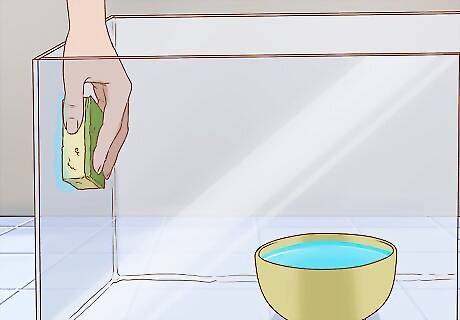
Clean the tank every month with clean water. Take your toad out of the tank and keep it somewhere safe. Remove the substrate and anything else in the tank. Use a cloth dampened with clean water to scrub out the inside of the tank and clean the glass, rinsing the cloth whenever it gets dirty. Dry the walls of the tank with a new cloth and add new substrate and hiding places. Then, put your toad back in the tank. Keep your toad in a smaller tank or a critter carrier while you clean out the main tank. Make sure it has plenty of water in the holding tank so that it remains comfortable.
Feeding Your Toad
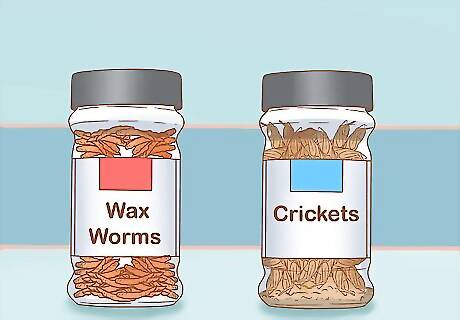
Purchase live insects to feed your toad. Wild toads are used to having to hunt to catch their food, so they won't be interested in food that doesn't move. Purchase some live worms and crickets from your local pet store and carefully lower them into your toad's tank to feed it. You can also feed your toad insects you find in nature. Only feed your toad insects that will be able to easily fit in its mouth; otherwise, it might choke while trying to eat. Toads are carnivorous and get most of their nutrients from eating insects. If you're not comfortable with feeding your toad live insects, keeping a wild toad as a pet might not be for you.
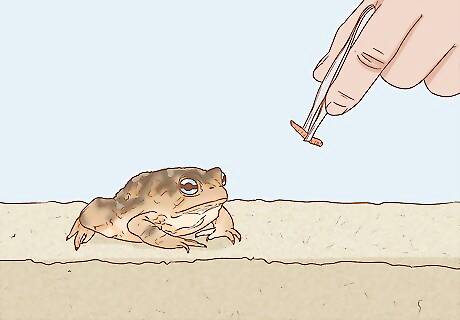
Feed your toad 1 or 2 insects each day. Your toad won't need to eat a lot to stay healthy and happy, but it does need to be fed regularly to stay alive. Give your toad 1 or 2 insects every day, feeding it more or more often if you notice it losing weight. If you're feeding your toad smaller insects, such as ants or ladybugs, you should feed it twice as much or twice as often to keep it healthy.
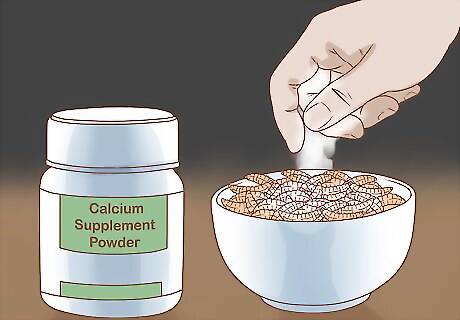
Add a calcium supplement powder to the food a few times each week. To help keep your toad healthy, enhance its nutrition with a calcium or vitamin supplement powder once or twice a week. Sprinkle a small amount of a supplement powder designed for toads over the toad's food before feeding it. Supplement powders made specifically to keep toads healthy can be found at your local pet store, or by looking online. In the wild, natural sunlight will help toads process calcium more effectively. When kept in a tank or indoors, they need a supplement to make up for the absence of sunlight and keep them healthy.
Catching a Toad
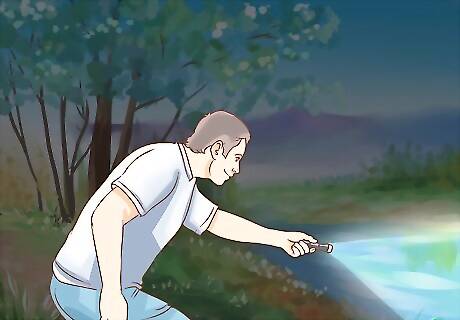
Look for toads in dark, damp places. Toads need a lot of water and very little sunlight to live happily, so they tend to spend time in shadowy places with a lot of water. Look around your yard in dark, damp places to see if you can find a toad to catch. It might also help to go out toad hunting at dusk, especially on a day when it has recently been raining. Look in, around, and under bushes or logs when trying to find your new pet. Toads can be burnt by too much direct sunlight, so you might need to look in a few hiding places to find one. In the springtime, male toads will sit in pools of water and croak loudly to try and find a mate. Listen out for loud croaking, or look in ponds and puddles to try to find a toad. If there's nowhere nearby that you think toads could hide, try making a small area that'll be more comfortable for one. Make a small puddle, add some hiding places, and add some decorations to make an area that will attract toads.
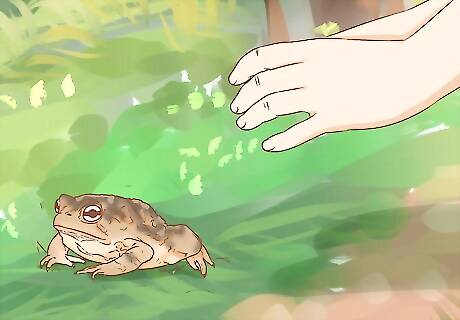
Move slowly to catch a toad with your hands. You're a lot bigger than a toad, so you'll need to move slowly, quietly, and carefully to catch a toad in your hands without scaring it away. Slowly kneel down in front of the toad and cup your hands around the toad. Lift it up off the ground, holding it carefully to stop it from jumping out suddenly. If you feel something wet in your hands, don't panic. The toad is releasing water from its bladder, not peeing on you. If the toad jumps out of your hands, it might hurt itself by hitting the ground too hard. Try and avoid handling the toad too much, as the oils on your skin can hurt it. Move your toad to a holding container as quickly as possible.
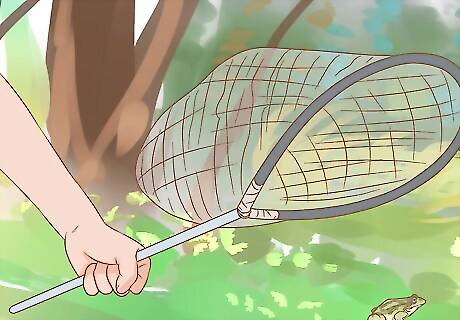
Act quickly to catch a toad with a net. While you'll need to move slowly and quietly to get close to a toad, you should move in one swift motion to catch it in a net. Swoop down over the toad with a bug net, letting the top of the net fold over so the toad can hop into it. Once the toad hops further into the net, pick it up and twist the top to keep the toad from jumping out. You'll need great aim to catch a toad properly! If you miss and hit the toad with the edge of the net, you may hurt it. Don't keep the toad in your net for too long, as it won't be very comfortable for it!
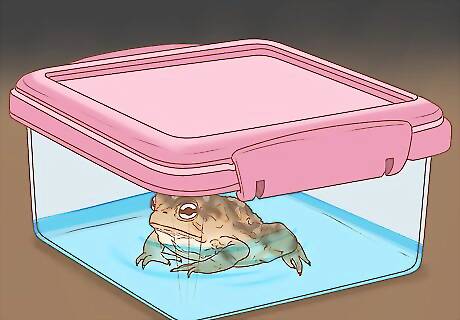
Keep the toad somewhere with plenty of water while you move it. Toads need a lot of water to soak in to stay comfortable. Bring a small tank, container, or critter carrier with you when you go out toad hunting. Fill it with ⁄2 inch (1.3 cm) of non-chlorinated water to keep the toad happy as you move it to its new home. Most tap water has some chlorine in it, which can be harmful to toads. Use tap water that has been treated with a dechlorinating tablet, or filtered or bottled water to keep your toad healthy as you move it. Try to avoid sloshing the water around too much, as this might distress the toad.
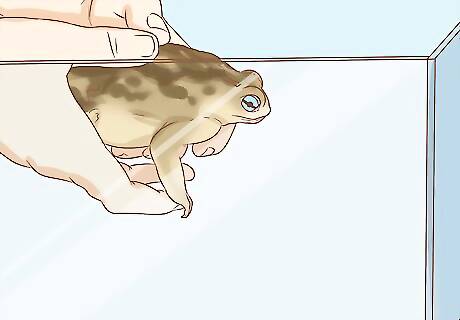
Transfer the toad to its new enclosure. Move your critter carrier, tank, or container inside so that it is very near to your tank. Take the lid off the tank, and quickly scoop the toad out of its temporary container before lowering it softly into its new tank. After 1 or 2 days, it should adjust to the tank and hop around happily. If your tank is large enough, you could also lower the transport tank into the new enclosure. Leave the lid on the transport tank open to let your toad jump out when it feels comfortable. Make sure you replace the lid as soon as your toad is in the tank. If your toad doesn't seem to be adjusting to the tank and seems unhappy, you may need to release it back into the wild. Try and find a different toad that will be more happy in captivity.
















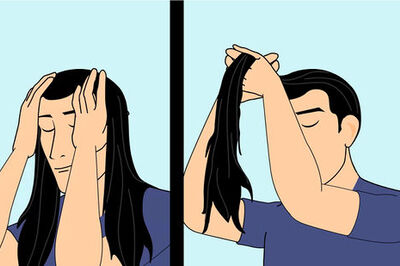



Comments
0 comment